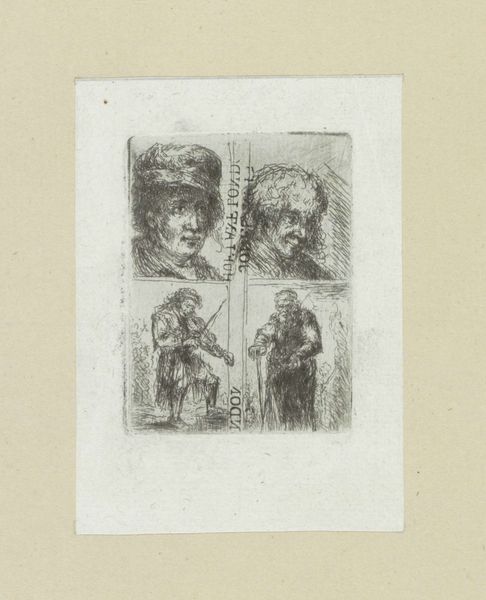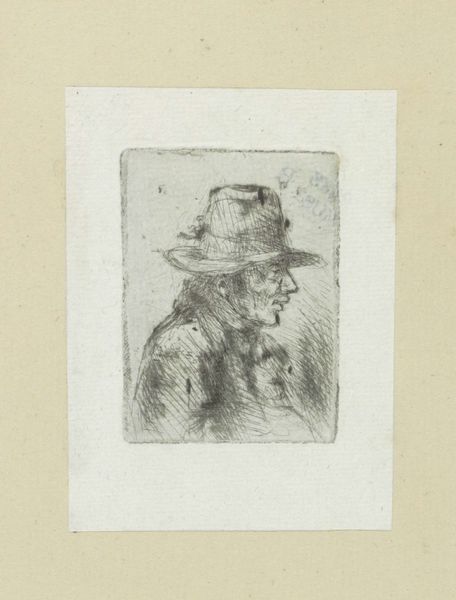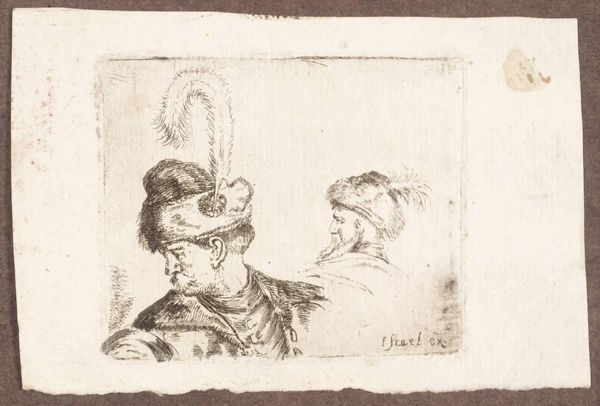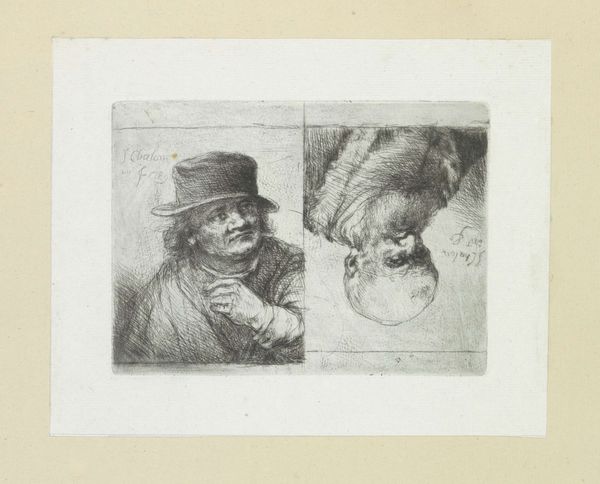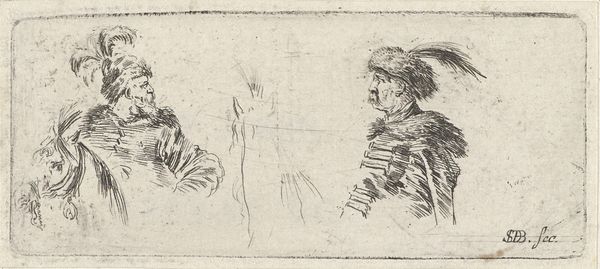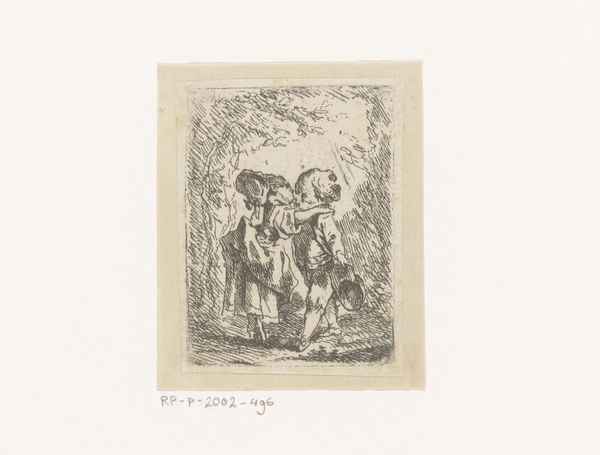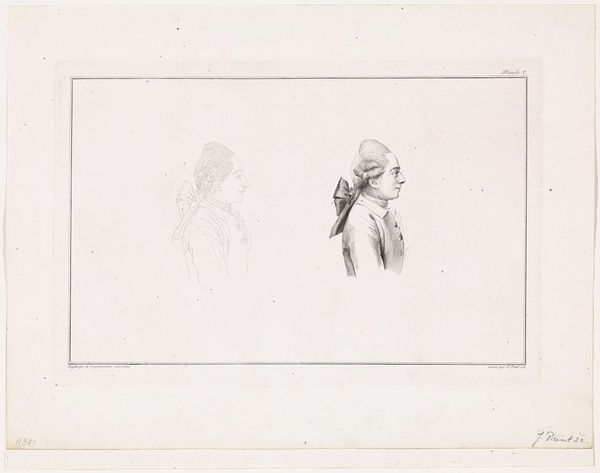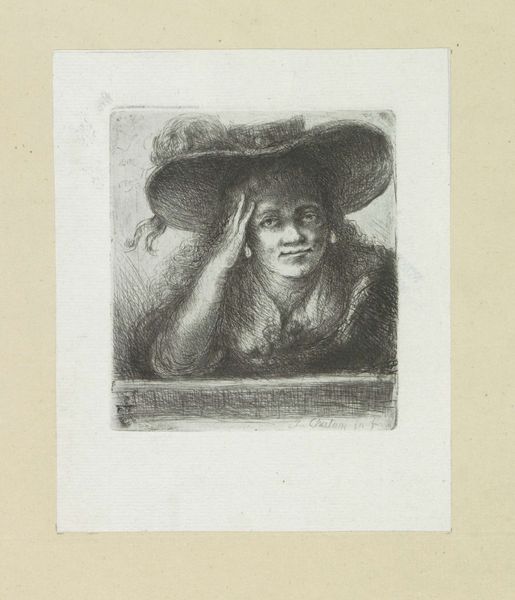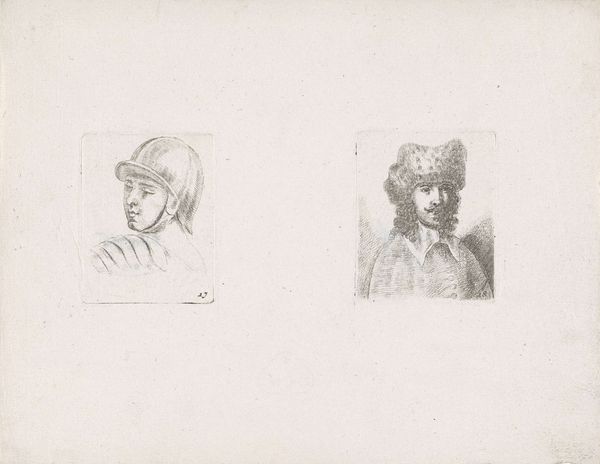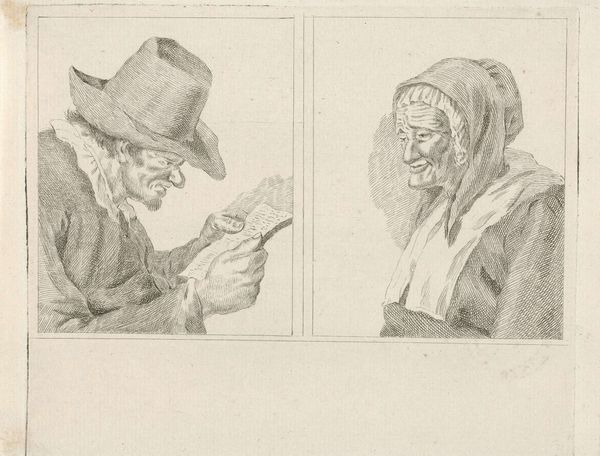
Dimensions: height 58 mm, width 91 mm
Copyright: Rijks Museum: Open Domain
Curator: We’re looking at Pieter de Mare’s "Twee Koppen," dating from around 1768 to 1796, a print residing here at the Rijksmuseum. It presents us with two head-and-shoulder portraits in separate frames. Editor: My first impression is of weariness. A sense of age, definitely, but something beyond that in the way the figures are rendered with these quick, etched lines. It almost feels like a critique of genre itself. Curator: I agree about the weariness. What strikes me is how this etching captures a very specific time. The rise of genre painting served a particular socio-economic purpose; in showing ordinary people doing ordinary things, you cement the idea that there are "ordinary" people to begin with. A division of labor, maybe? Editor: Exactly! And how it's reproduced is interesting: the use of etching, a relatively accessible printmaking technique, points to wider consumption beyond the elite. These images are materially linked to that growing merchant class. It suggests both artistic skill and industrial process. Curator: Indeed. De Mare engages with existing portrait and genre conventions. We have these seemingly individualized, specific people—yet, placed within separate boxes, implying a broader societal categorization based on occupation or social standing. Editor: What do you make of the details, materially? Look at the shading created through cross-hatching; it's almost hasty but creates a sense of texture to their clothes. It feels deliberate, conveying work. Curator: These techniques create a stark realism—perhaps challenging romanticized visions of the poor by those in positions of power during the era of Dutch prosperity. Editor: So even in its time, "genre-painting," wasn't a benign, transparent record of reality, it was actively shaped and distributed based on socioeconomic changes of that period. De Mare acknowledges labor through his focus on materials. Curator: By representing working-class figures so bluntly, he arguably offers a silent commentary on the growing divide that characterizes 18th century Europe, resisting its flattening through both genre painting or portraiture. Editor: Thinking about this work as an example of printmaking offers valuable insights into the evolving conditions of labor, production, and consumption in Dutch society. Curator: Examining how De Mare used form and composition provides a fascinating intersection between the growing interest in social genre painting and individual experiences in this era of class and gender hierarchies.
Comments
No comments
Be the first to comment and join the conversation on the ultimate creative platform.

